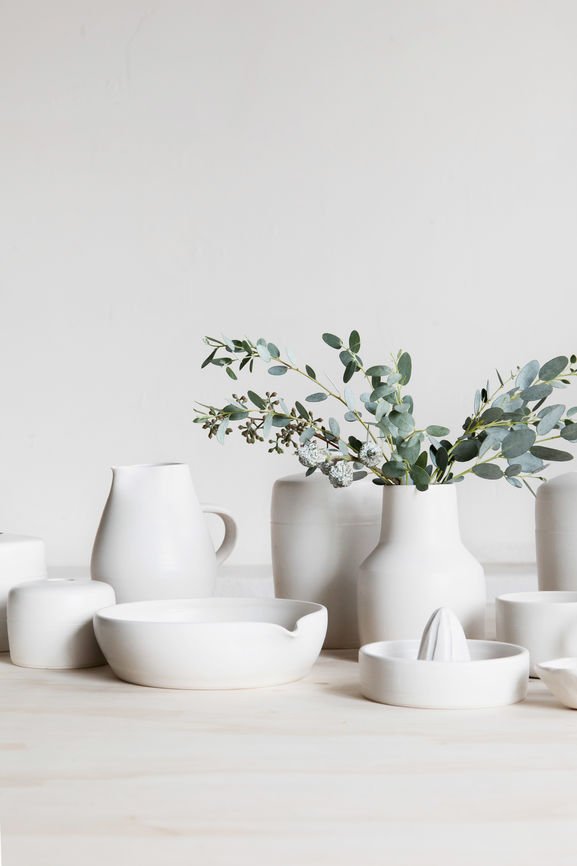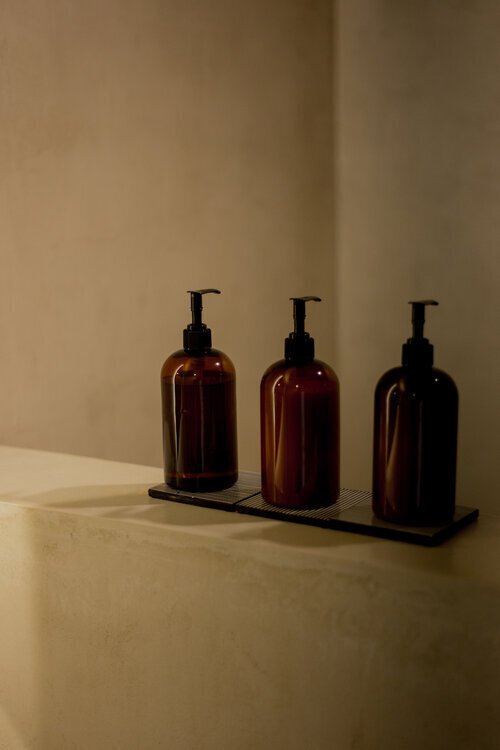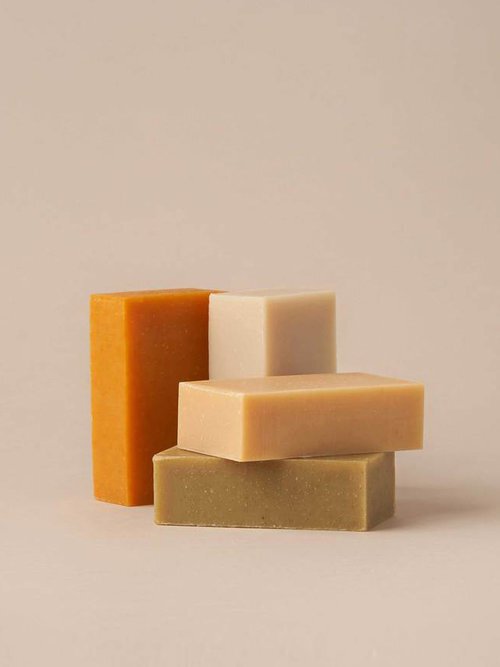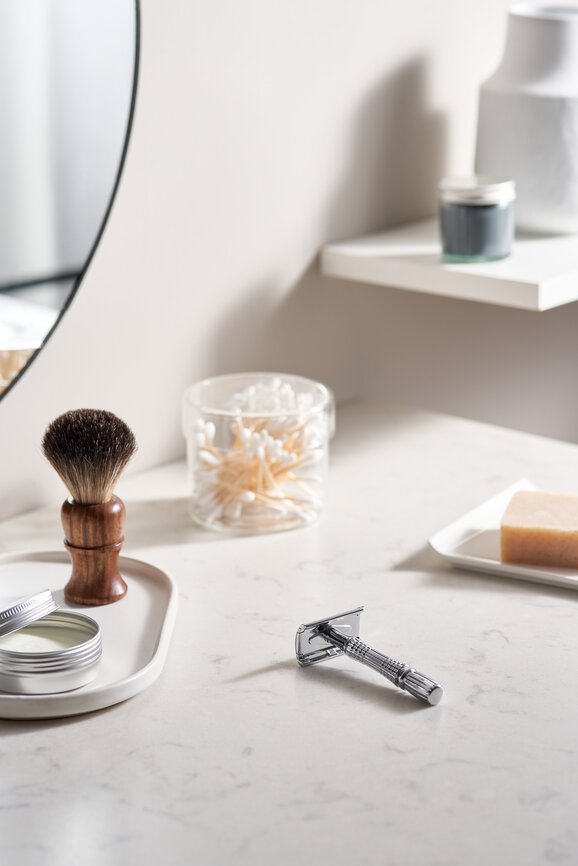
Ditch These 5 Toxic Cleaning Products And Make These DIY Recipes Instead
Homemade Cleaning Products For A Greener Home
Detoxing your household cleaning products is no fun when faced with a dizzyingly long list of toxic chemicals that have documented negative health effects. What’s worse? Walking down the aisles of your local store trying to decipher ingredient lists, ultimately, leaving empty-handed and defeated.
When I first began to clean out my cabinets I felt exhausted and confused by the many options on the market, which have become easier to navigate now that I make my own. It turns out that DIY cleaning products are just as effective and an easy and affordable option that’s way more eco-friendly than many of the big name brands. Not to mention that with only three ingredients you’ll know these recipes by heart in no time and feel even more empowered to make long-lasting change in every area of your life.
To help you get started, here are five recipes for homemade eco-friendly and nontoxic cleaning products so you can ditch the toxic stuff for good.
Linen Sprays
Ditch It | If it lists “fragrance” as an ingredient without “natural essential oils” immediately after, don’t buy it and definitely don’t spray it on your sheets. Studies from organizations like EWG (Environmental Working Group) show that “fragrance” is an umbrella term for a combination of harmful, synthetic chemicals that can do some serious damage to the body.
Replace It | Some good news is that many linen sprays are made with essential oils instead of fragrance. So, you could either go off in search of a safer alternative or make your own! Here’s a two-ingredient recipe for a homemade linen spray.
Ingredients:
1 cup of warm, filtered water
8–10 drops of essential oil of your choice, lavender is always a good option here
8 oz amber glass spray bottle (dark-colored glass helps to preserve the oil)
Directions:
Use a kitchen funnel to pour the warm water into the glass spray bottle and add 8-10 drops of essential oil. Tightly close the lid, shake gently and spritz on sheets, rugs, upholstery and other fabrics. This also works great in your car and on dog beds since lavender is nontoxic for pets.
Air Fresheners
Ditch It | The EPA lists formaldehyde, petrochemicals and other airborne toxins as some of the most harmful, and shockingly, common ingredients found in most air fresheners used to cover up malodors.
Replace It | Baking soda is a powerful, eco-friendly tool you can use to combat unpleasant aromas in the kitchen, bathroom and closets. The best part? It’s right in your pantry. Whipping up your own air freshener tablets is a simple and cost-effective method that will last you a long time. Here’s how:
Ingredients:
1/2 cup of water
1/2 cup of Baking soda
10-12 drops of Citrus essential oil (sweet orange, lemon or grapefruit)
Paper cupcake liners
Muffin pan
Directions:
Combine the water and baking soda in a medium bowl until it makes a thick paste. Add in the essential oil and stir well. Line the muffin pan with the paper cupcake liners and place a few spoonfuls of the mixture in each until they’re full. Let sit for at least 24 hours, then pop them out and place them around more aromatic areas of the house (e.g. bathroom, fridge, bedroom) to help neutralize odors.
All-Purpose Cleaners
Ditch It | If it’s not certified by the strict regulations of a Green Seal or Ecologo, it’s not safe to use. Whether it’s a nasty combo of ammonia and chlorine bleach, or triclosan, phthalates and other endocrine disruptors (chemicals that act like a hormone in your body and mess with your endocrine system), these ingredients can be found in many store-bought cleaners. It doesn’t just harm us, it has been proven that as they are washed away into our waterways it negatively affects marine life.
Replace It | Tried and true pantry items like baking soda and distilled white vinegar will clean and disinfect surfaces without the harmful side effects. Add a little bit of citrus essential oil, or a scent of your choice and you’ll wonder why you ever bought an all-purpose cleaner in the first place.
Ingredients:
1 cup warm, filtered water
1 cup white distilled vinegar
15 drops of citrus essential oil like sweet orange
16 or 20 oz amber glass spray bottle
Directions:
Simply combine the water and vinegar in the spray bottle using a kitchen funnel. Add the essential oil, close tightly and shake well!
Dish Soap
Ditch It | This product touches not only your dishes, utensils and bodies but flows down the drain into waterways where it also affects sea life. Since there is no requirement for companies to list all of the ingredients on household cleaners, it’s truly a risky move. Plus, many soaps are made from a petroleum or animal fat base. Studies from EWG show that many liquid dish soap products are laden with toxic chemicals like, fragrances, triclosan and formaldehyde, just to name a few.
Replace It | Castile soap, like one from Dr. Bronner’s, is an incredible eco-friendly alternative that you can use as a dish and even a hand soap (!). It’s created from plant-derived fats like coconut, olive or almond oil. They have plenty of great scents to choose from, so grab your favorite and make this easy dish soap.
Ingredients + Directions:
Use the 1:10 ratio of castile soap and water. Combine both in a bottle and use as you normally would when cleaning dishes.
Dirty Sponges
Ditch It | Your worn out, dirty sponge does a lot of cleaning and overtime spreads around a lot of bacteria.
Replace It | Swap your sponges for a biodegradable cellulose version and sterilize them once a week with this easy DIY sponge cleaning recipe.
Ingredients + Directions:
Bring a small pot of water to a boil and add your sponge. Add 8 drops of sweet orange essential oil, which acts as a powerful antibacterial, antifungal and antiseptic. Remember to replace your sponge when it begins to wear out and toss it in your compost so it properly biodegrades.
Katherine Oakes is a professional writer, editor and aspiring environmental advocate based on the East Coast. Her passion for sustainability and the outdoors comes only second to her love of really good tacos. She has written for various publications and brands including, Huckberry Journal, REI’s Adventure Projects, Pure Green Magazine and more. Offline, you can find her teaching yoga or blogging about her wholehearted attempts at sustainable living.



